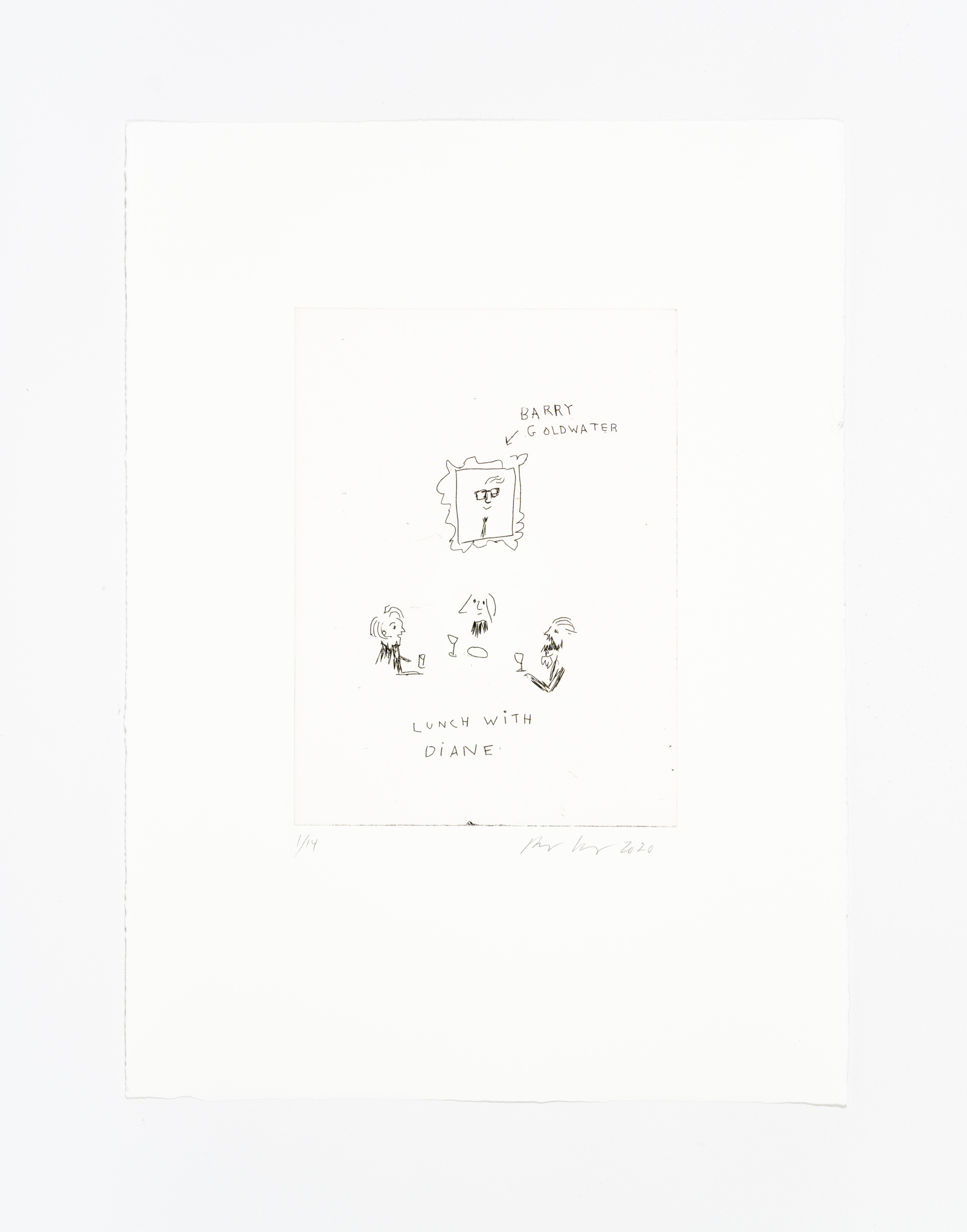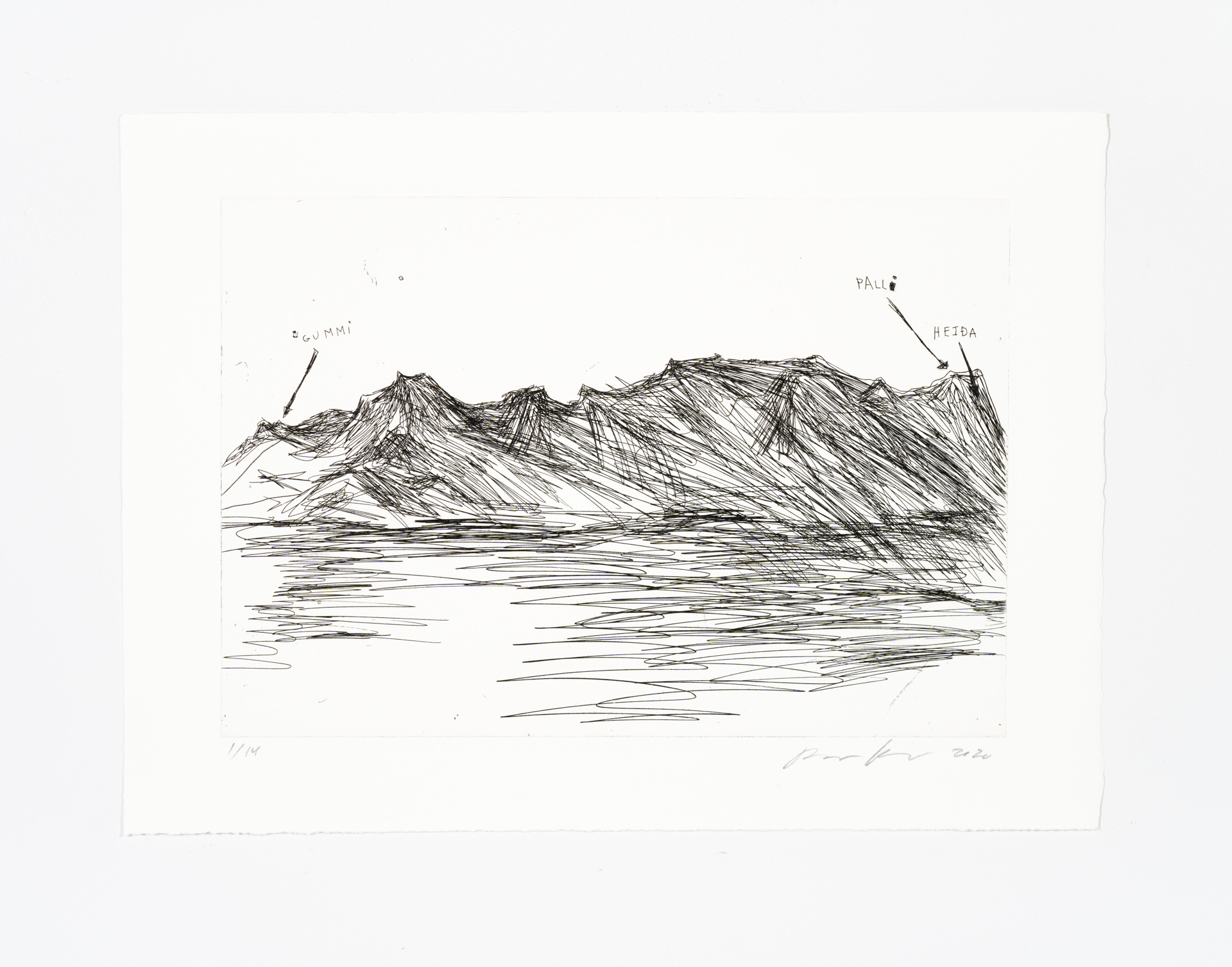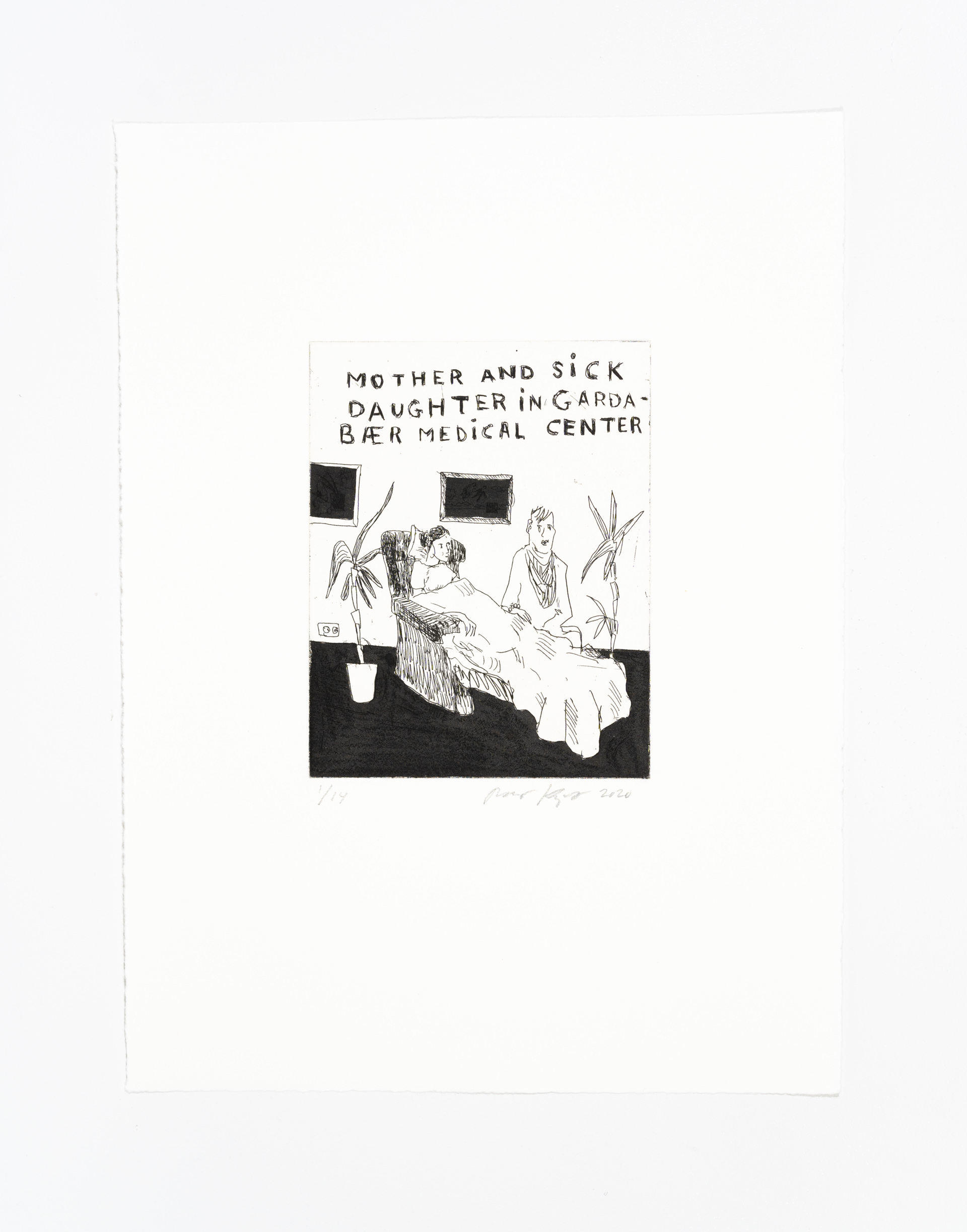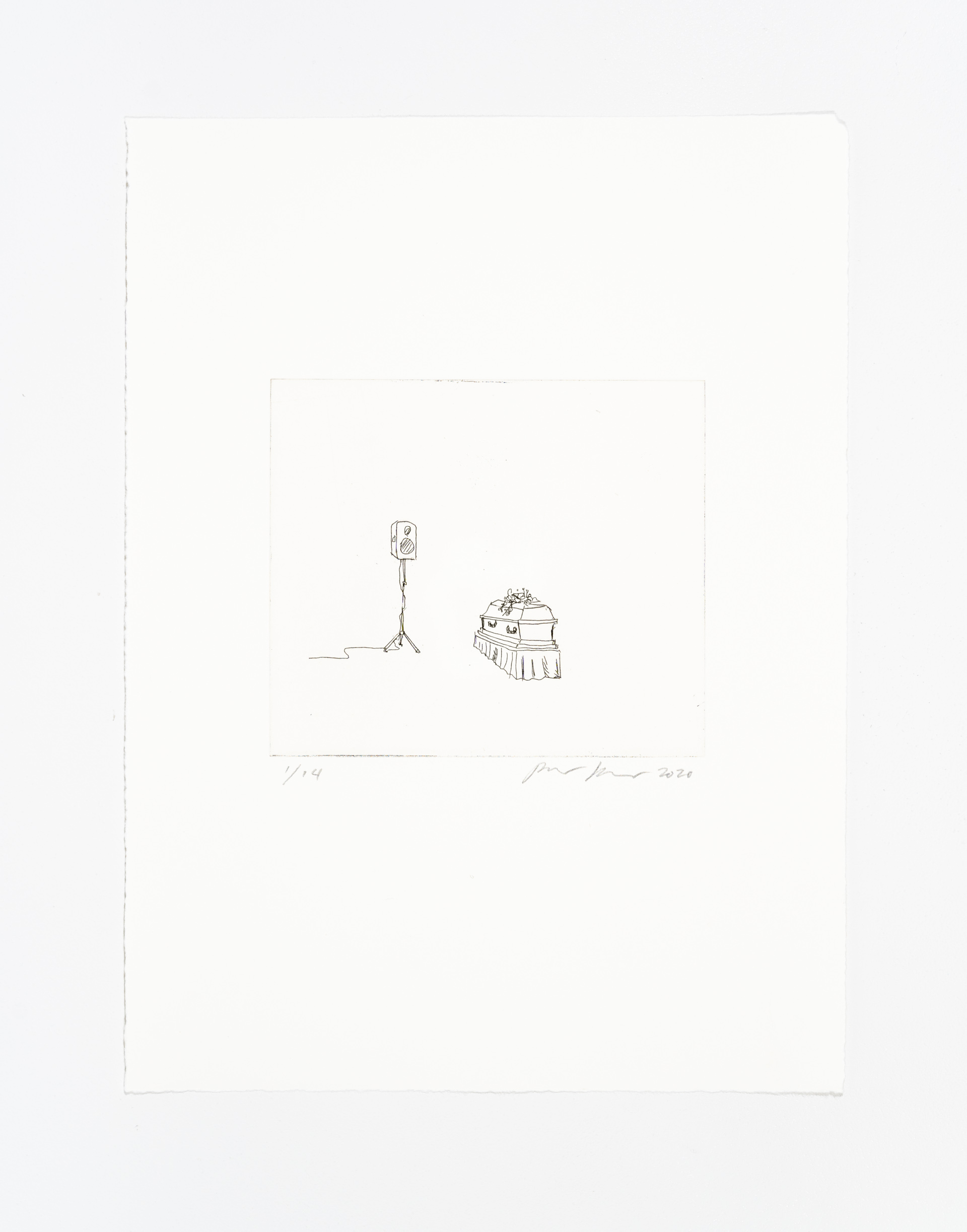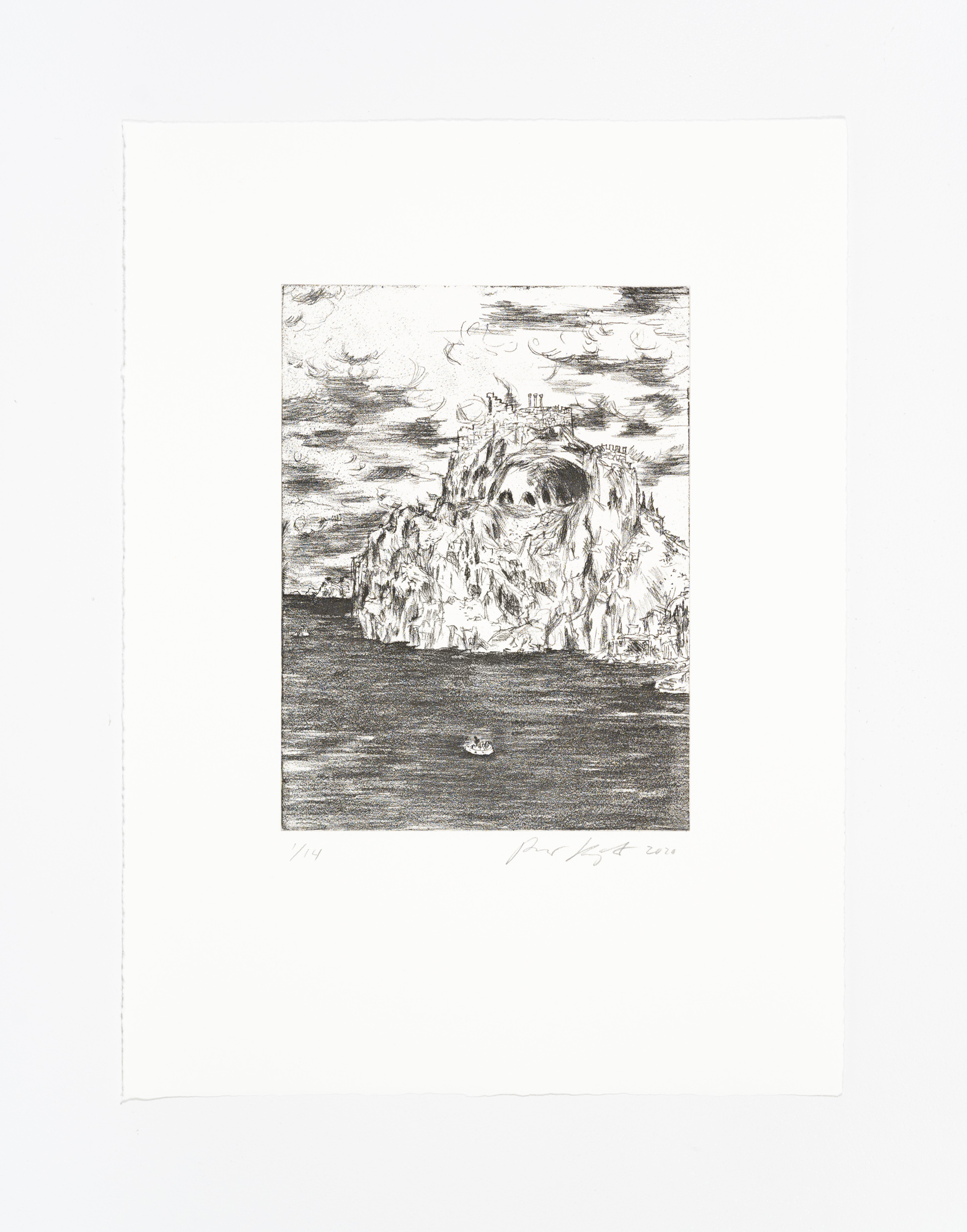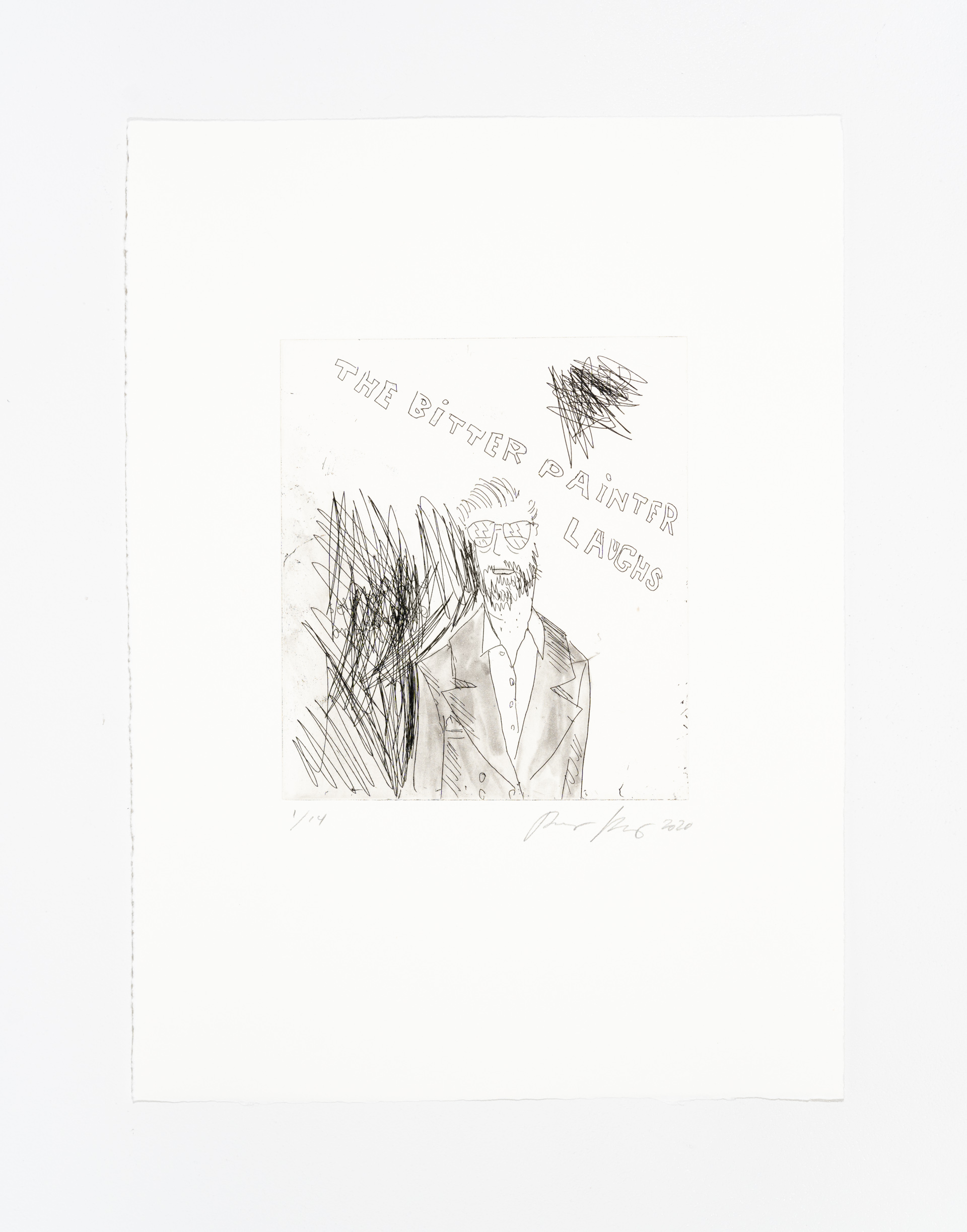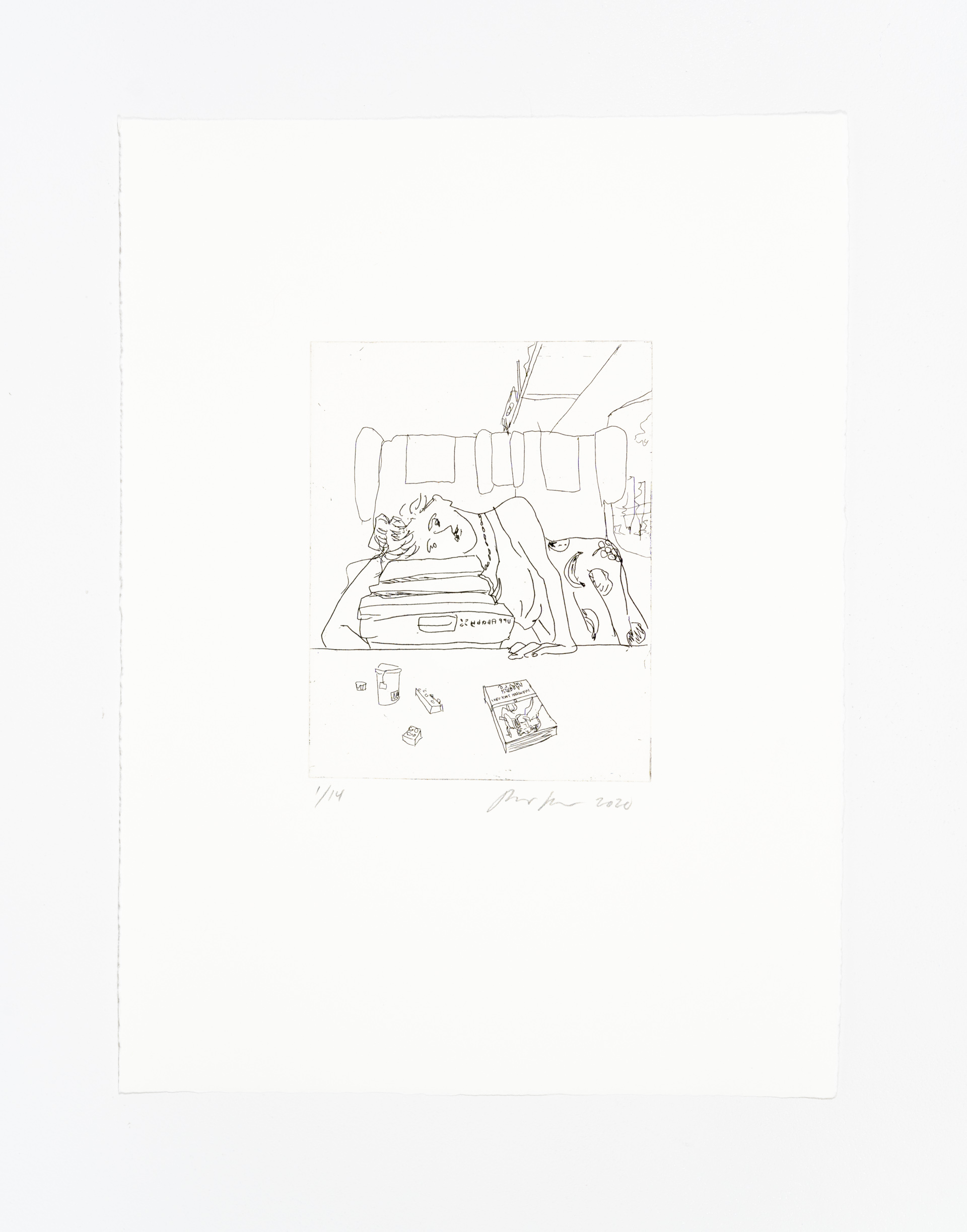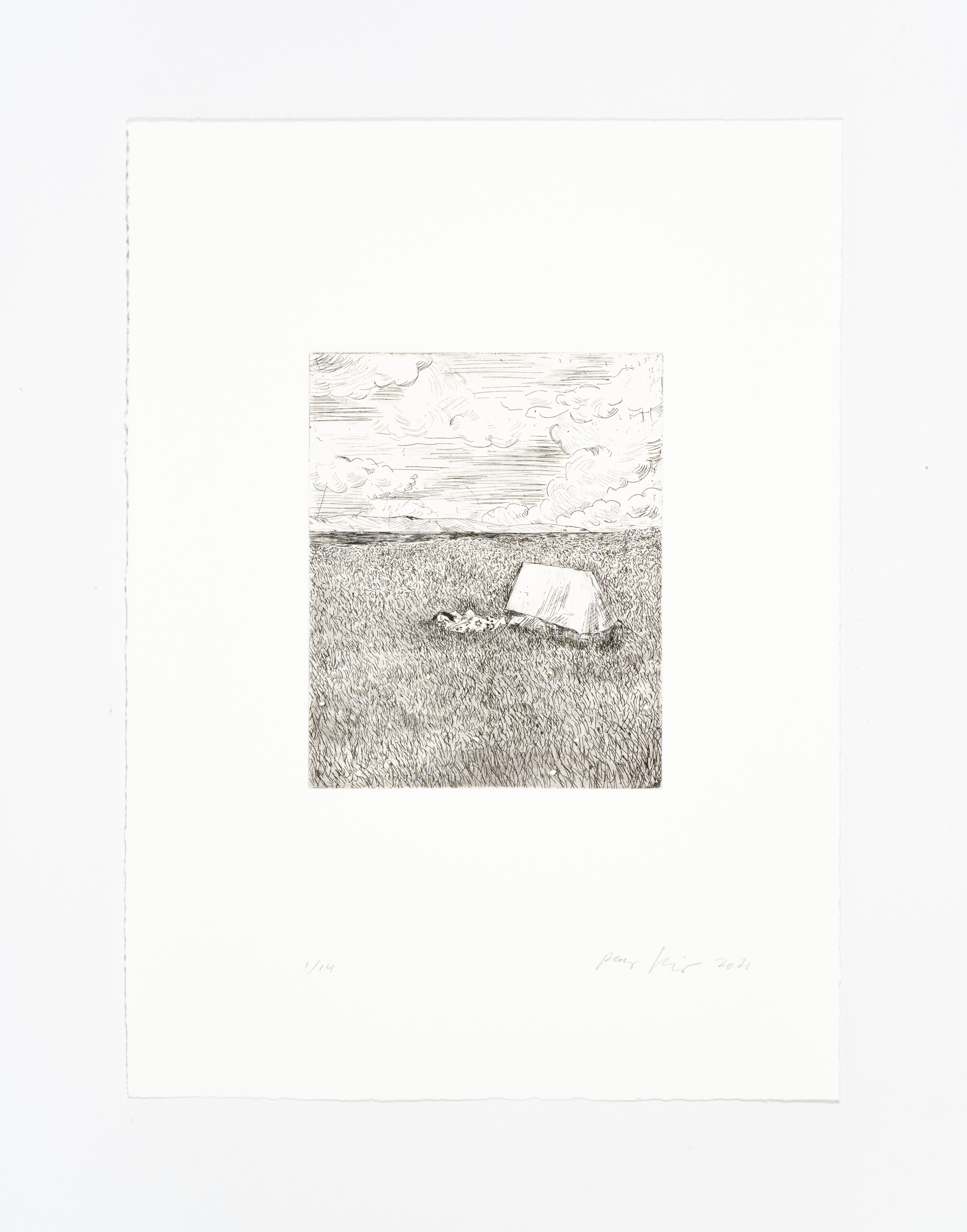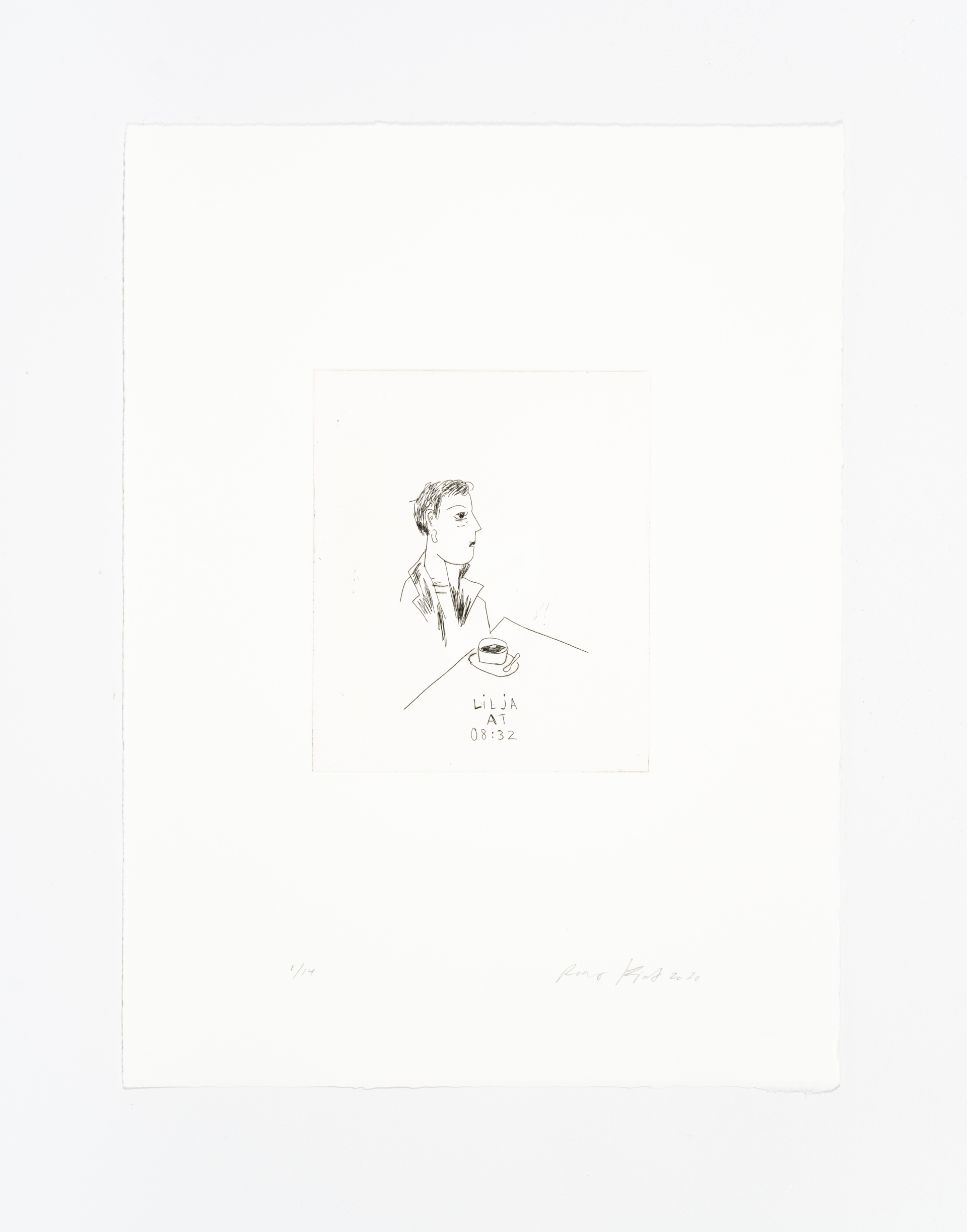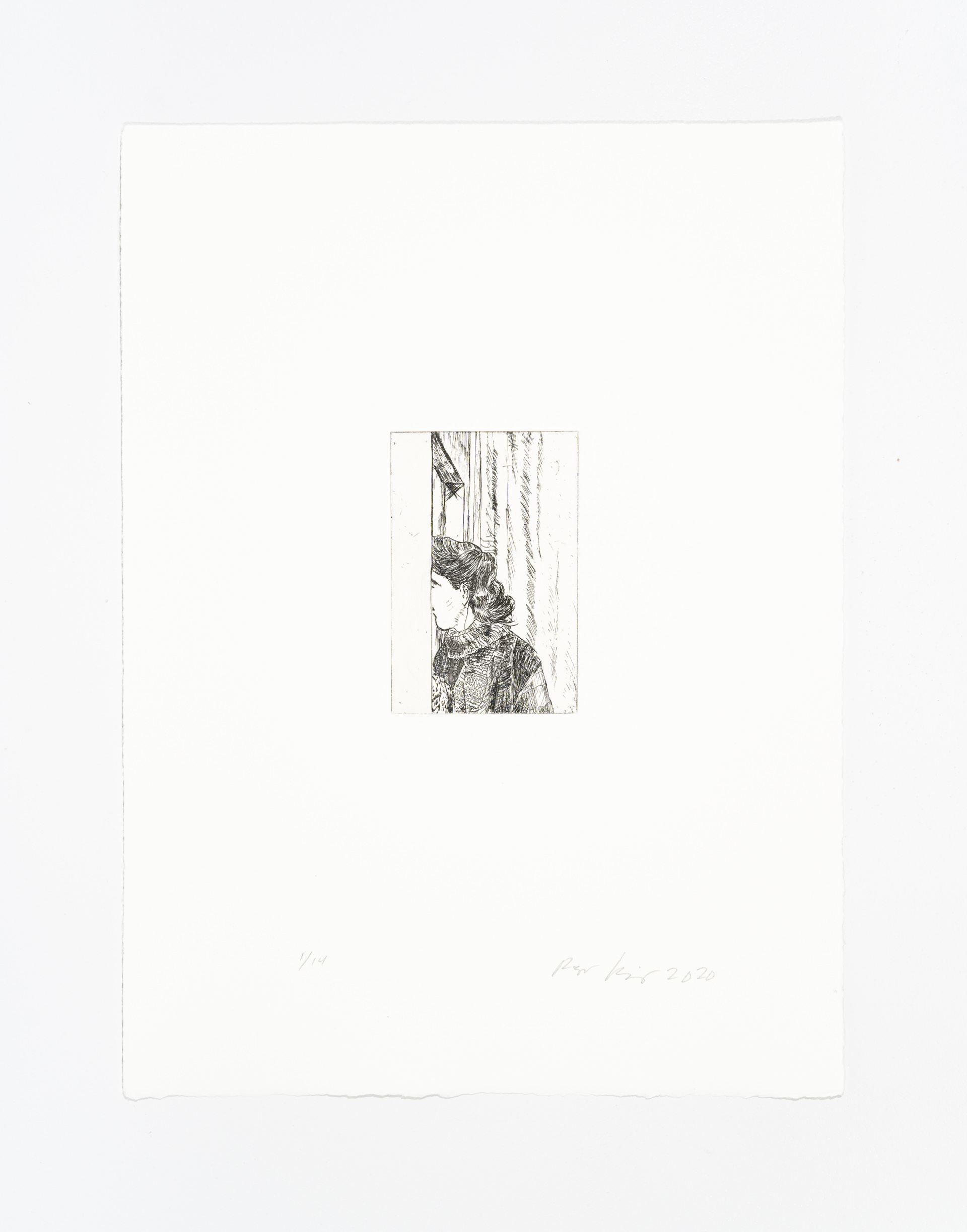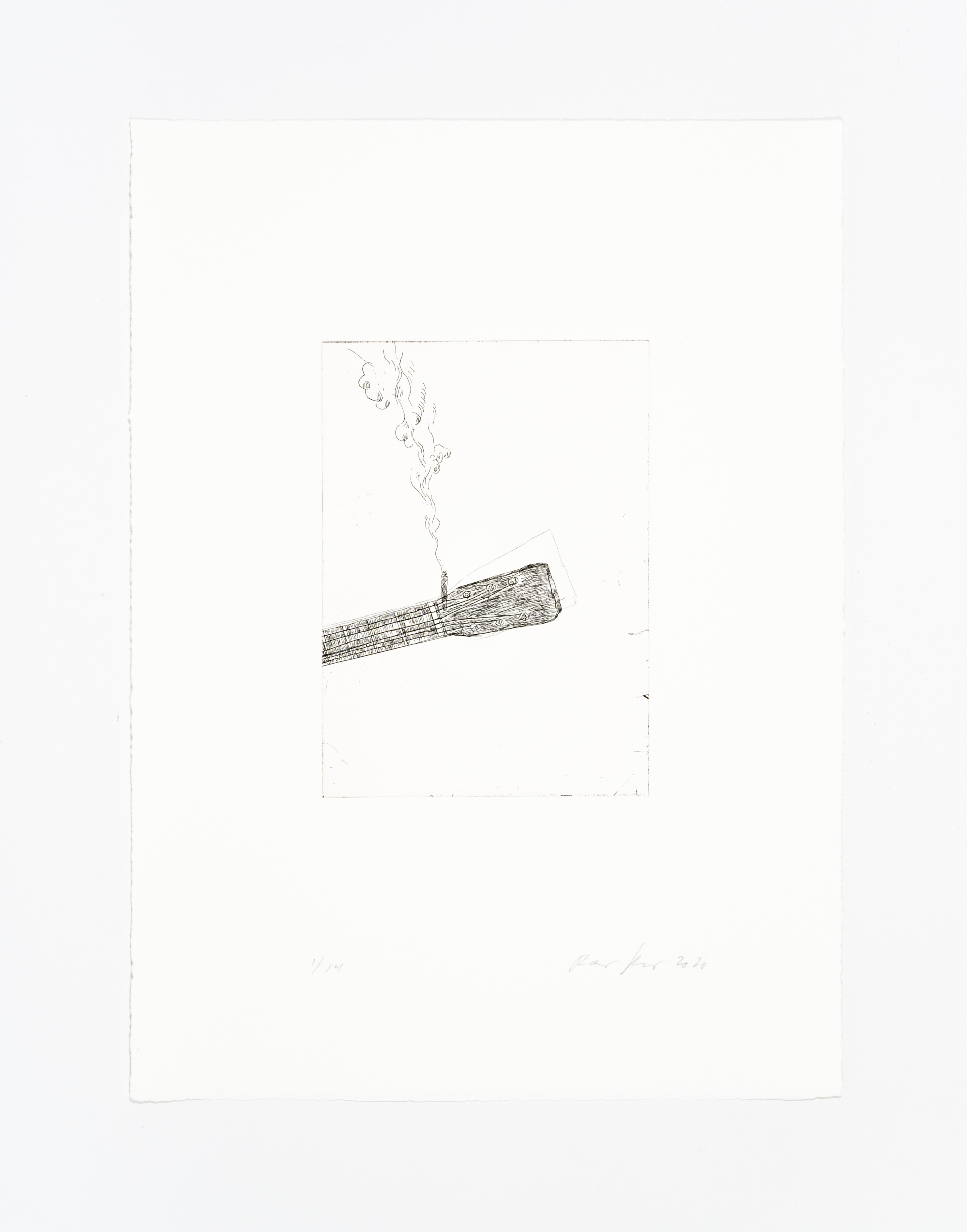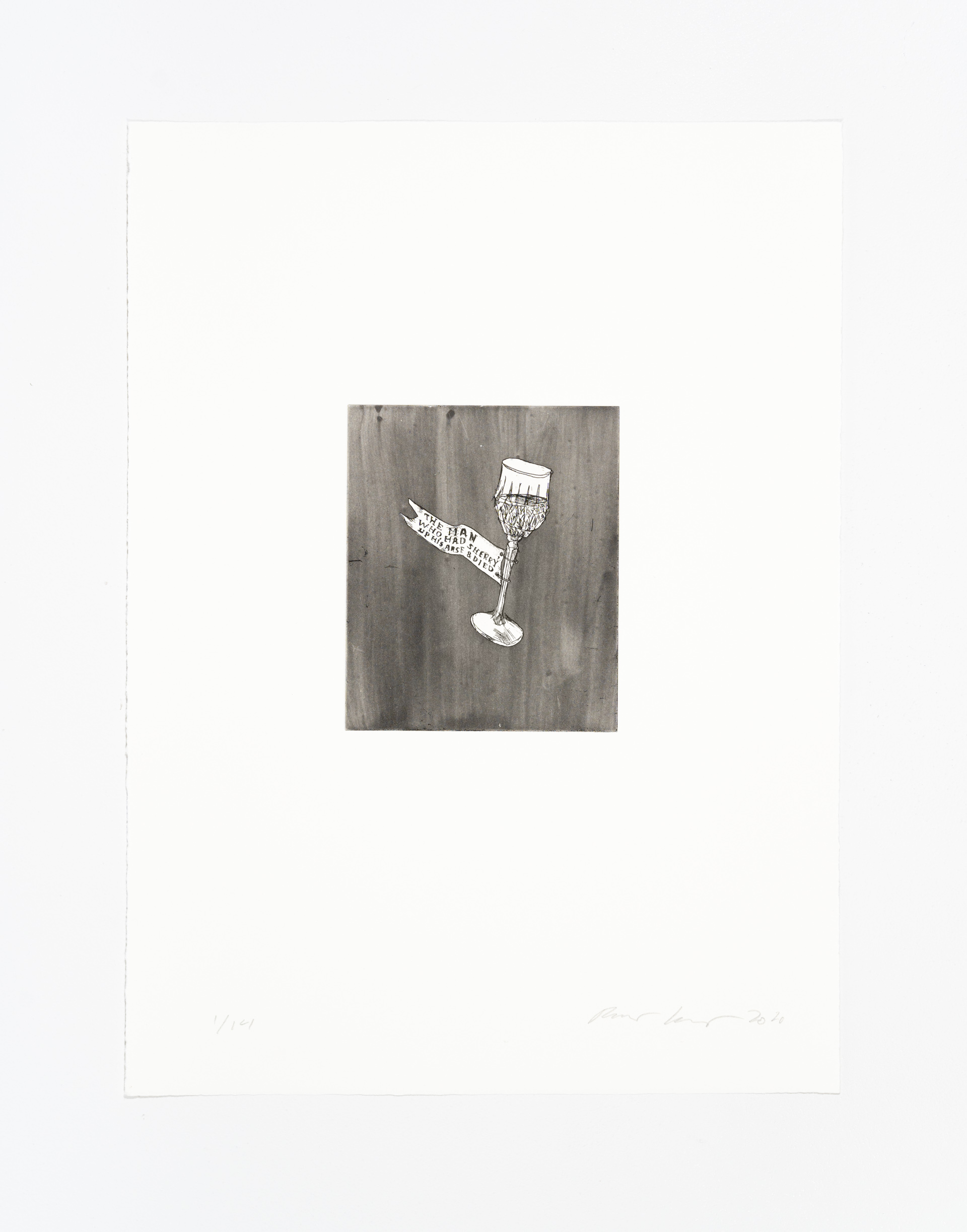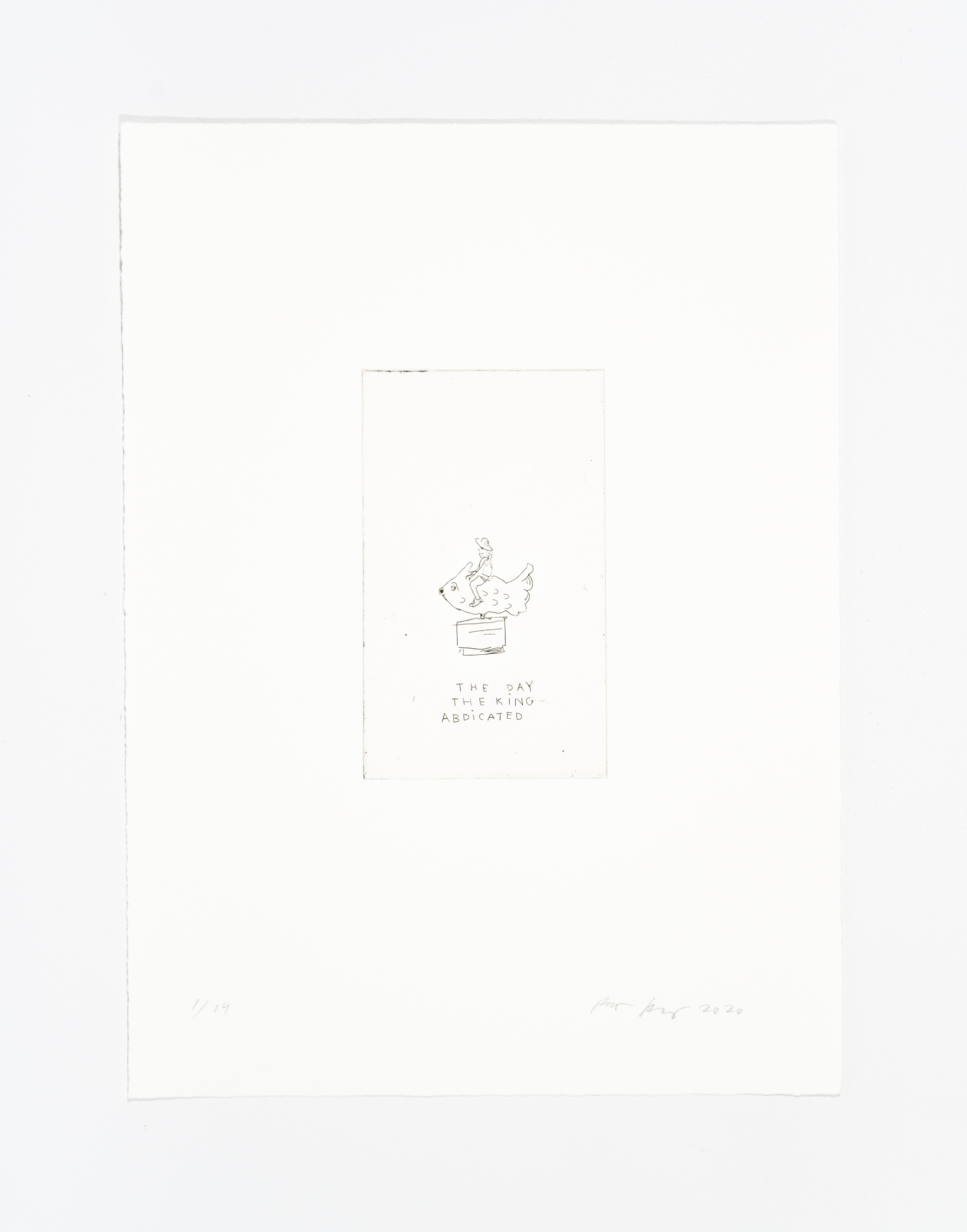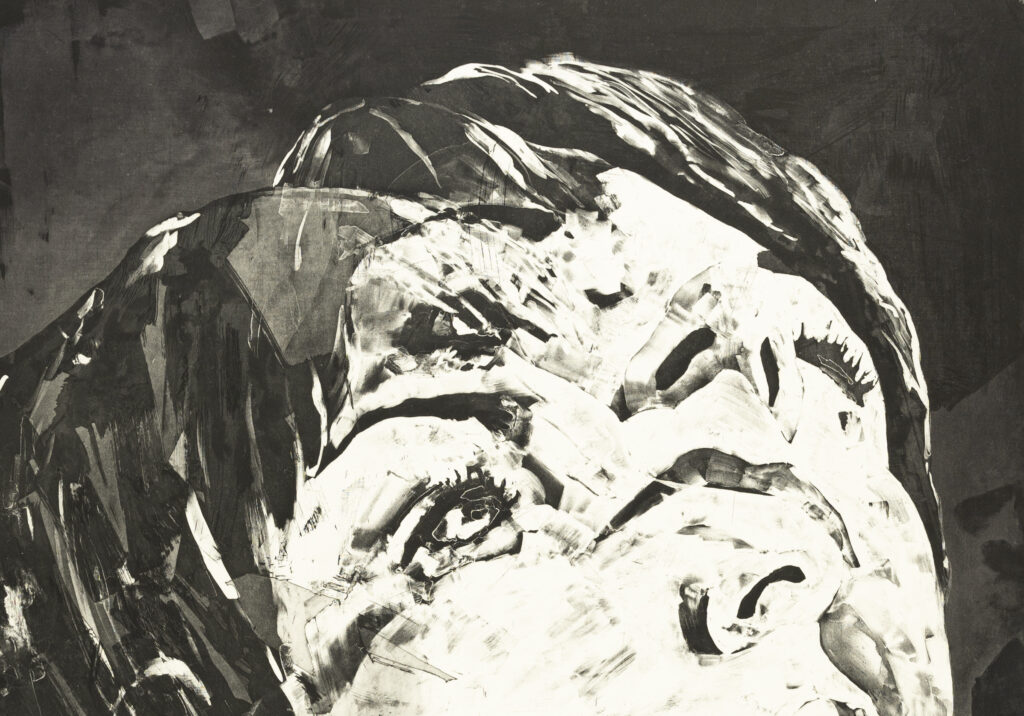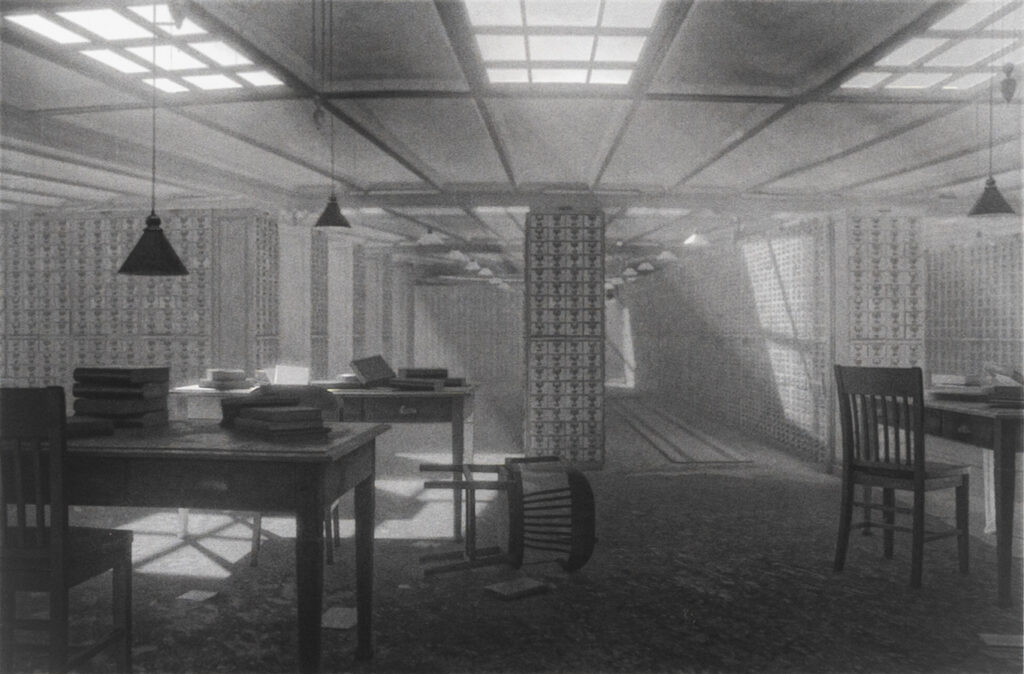Prints encapsulating humorous anecdotes, as well as more universal stories of fear and loss.
Ragnar Kjartansson | Repent & Fire
Inquire
My work is so much about the emotional connection to places
Ragnar Kjartansson
Ragnar Kjartansson is best known for durational performances, though the implication of truculent avant-gardism is misleading. In pieces such as A Lot of Sorrow—for which he invited the band The National to perform one short song continuously for six hours—narrative evaporates in order to precipitate as a state of mind. Kjartansson is also, somewhat ambivalently, a maker of art objects, though the border between object and performance is friable. “When I do a painting,” he explains, “I’m doing a painting because I love the atmosphere of making a painting.” The decision to make prints was also a product of a kind of atmospheric pressure:
When I visited Niels and the printshop the first time, I felt—why am I not living this life? Being here every day, having lunch with these people? Per Kirkeby was there, in a wheelchair, working at a table. I really felt that history, and I was totally enchanted. The desire to make prints really had very much to do with working there, with those people, and stepping into that life for some period of time.


Revealingly, Kjartansson steered clear of the photo-derived processes and dramatic scale that might seem obvious choices for an artist who works in theatre and video. Instead, he zeroed in on the shop’s most indigenous technique—simple, hand-drawn, black-and-white etching. “Every medium,” he notes, “is loaded with a historical burden, even video.” Printmaking is no exception. “But etching doesn’t have a contemporary burden, which is totally nice. It used to be the medium to get the message through, but now it’s sort of ‘quaint.’ I wanted to dig into that tradition or that thing of the etching.”
The challenge was to find a way of exploiting etching’s intimacy and antiquarian temper without descending into the twee. For subject matter, he turned to the sketch-books he carries everywhere, “constantly throwing things in when I’m travelling or waiting for the bus.” These vignettes of observed life are rarely shared and almost never transformed into public works of art, but “it felt very natural to turn them into this very private medium of etching.”
Since most of his work takes place in some form of performative event, Kjartansson is used to collaborating and enjoys it, but most of the time he is operating in domains where he has expertise and can anticipate the outcome. The print workshop was far more mysterious: “I had no idea what spit bite and aquatint meant. I sort of get it now, but they have all these methods within methods that Niels has developed through the years.” And yet what comes through in the etchings is an apparent ease of line, the comfortable occupation of a small space with a quickened idea. This Kjartansson credits to the tenor of the milieu: “the absolute relaxed dignity of people like Julie, Mette and Tom—everyone really knowing what they’re doing without being snooty about it.”
On his first extended visit, in late 2017, Kjartansson executed ten plates; some eighteen months later, he returned with his extended family and finished another fifteen. (His sister-in-law and her husband looked after the kids during the day, while he and his wife Ingibjörg Sigurjónsdóttir went to the workshop; on Sunday every-one would go to Tivoli). The set of twenty-five prints takes its name from a line etching of the word REPENT in serifed 3D type. Some of the depicted scenes are mysterious (a desk drawer full of swords in a ramshackle estate on the Hudson River); some poignant (a small monument carved with a laurel wreath and the single word or name, “Mercy”); some droll (a print titled The Board Meeting depicts one person gazing glassily into space while an-other face-plants on the conference table).




The etchings were followed by seven large wood-cuts of flames. Rough and bright, they have the immoderate demeanor of stage props, and indeed similar flames have featured in Kjartansson’s installations and performances: “I’ve been making this fire motif all my life. My childhood drawings were always just fire.” Doing them in woodcut, however, was Niels’s idea: “One day Niels was like, ‘wouldn’t it be nice to make woodcuts of this fire motif?’ And I thought that sounds like a really good idea. If everything springs from one very limited brain, at least in my case, there wouldn’t be much.”

The woodcuts are titled Fire, the etchings are titled Repent — an invocation of Grand Guignol hellfire and brimstone that feels at odds with the prints’ casual and approachable presence. But once you start looking, it is easy enough to trace veins of fear and loss through every picture—daggers in a drawer, mercy on a tombstone, or the tenderly drawn tall window of a kind common to pre-war Berlin architecture. Its net curtains fail to keep out the night, though an electrical cord, trailing along the baseboard, suggests a possible out-of-frame lamp. In the empty space below, spiky pseudo-Fraktur letters spell out “German Darkness”—Weltanschauung, a visual pun, a Romantic trope, a reminder of the banality of evil, all of the above.

In their insouciance and quixotic depth, Kjartansson’s prints are of a piece with all his work, but they would never have existed, he asserts, had he not been won over by Niels’s invitation.
There is just something magical about it all that I really fell for. It was like Niels just asked, ‘do you want to come out and play?
Susan Tallman
No Plan at All, Hatje Cantz 2021

About Ragnar Kjartansson
Widely recognized as one of the most exciting and significant voices of contemporary art, Ragnar Kjartansson takes a both loving and critical look at Western culture. Love, identity, melancholy, masculinity, power and powerlessness are among the artist’s central themes.
Major solo shows include exhibitions at the Kunstmuseum Stuttgart; The Metropolitan Museum of Art, New York; the Reykjavík Art Museum; the Barbican Centre, London; the Hirshhorn Museum and Sculpture Park, Washington D.C.; the Musée d’art contemporain de Montréal; the Palais de Tokyo, Paris; the New Museum of Contemporary Art, New York; the Migros Museum für Gegenwartskunst, Zurich; the Fondazione Sandretto Re Rebaudengo, Turin; the Institute of Contemporary Art, Boston; and the Carnegie Museum of Art, Pittsburgh; among others. Kjartansson participated in The Encyclopedic Palace at the Venice Biennale in 2013, Manifesta 10 in St. Petersburg, Russia in 2014, and he represented Iceland at the 2009 Venice Biennale, in which he participated again in 2013.
Ragnar Kjartansson was born in 1976 in Reykjavík, Iceland, where he continues to live and work. He has been collaborating with BORCH Editions since 2016.
Learn more about Ragnar Kjartansson









